1. Introduction
Full frame has historically been considered the better format for professional photography. The reason for this is purely because of the physics and science behind a bigger sensor. Photographers, however, need to be mindful of the type of photographs they are taking, as well as the type of lenses and gear they already have, before making a decision analyse aps-c vs full frame camera sensor and then choose what is best for them.
Nowadays, the quality differences between full frame and crop sensors are very minuscule for most photography applications. This is because crop sensor technology has improved quite a lot, overcoming many of the full frame advantages.
Beginner photographers frequently think they’ll need a full-frame camera to take decent photographs. But this isn’t true because—as you’ll see in this detailed blog post—APS-C sensored cameras do perform better in different types of scenarios. And regardless of which camera you’ll do better with, your level of professionalism does not matter. It all boils down to your photography needs.
Read through this comprehensive blog post carefully before deciding what size sensor is best for you, as this article covers everything that you need to know that concerns APS-C vs full frame camera sensor.
2. Crop Factor of APS-C vs Full Frame camera Sensor
The crop Factor represents the difference in size between a 35mm film frame and the sensor of your camera. Look at the image below.
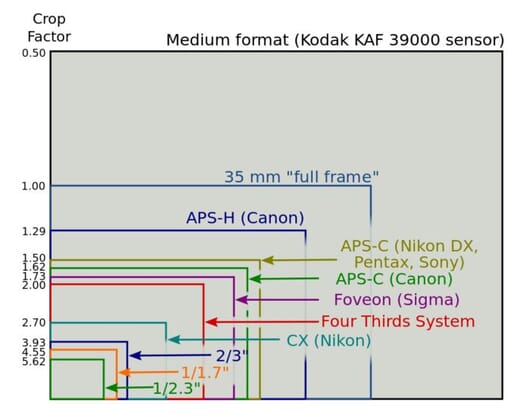
The sensor of a camera is a solid-state device. Your camera’s sensor—like film—captures the light needed to form a digital image. For instance, if the crop factor of your camera is 2, it simply means that your camera’s sensor is half the size of a 35mm film frame. Sensors of varying sizes are fitted on modern digital cameras.
What Is Full Frame?
Pricier digital SLRs are usually fitted with sensors that have the same size as 35mm film. The crop factor of these cameras is 1, and this is known as Full Frame.
What Is APS-C?
APS-C means Advanced Photo System Classic. The crop factor of an APS-C camera sensor differs by manufacturer. It’s typically 1.6x in Canon cameras. And it’s usually 1.5x in Sony, Pentax, and Nikon cameras.
You can find the crop factor of your camera in the user manual.
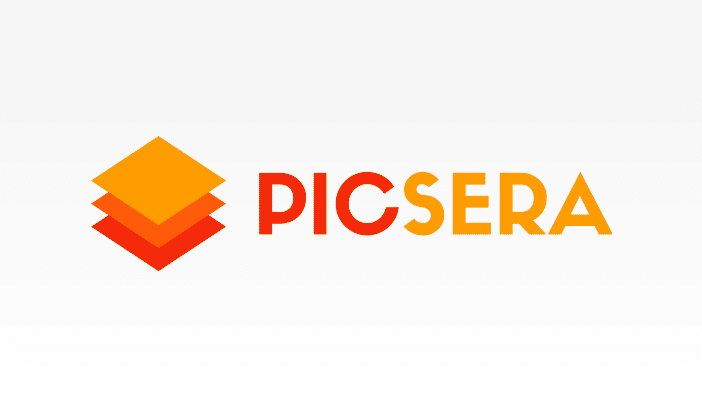
Outsource Photo Editing Services
Picsera offers photo editing services and retouching, so you can focus on your business instead. Spend a fraction of the cost, time, and effort of photography with Picsera.
3. The Math Needed to Convert from Full Frame to APS-C
Think of converting from full frame to APS-C in terms of converting miles per hour to kilometers per hour. For example, what’s 100 miles per hour? The answer is 160.93 kilometers per hour. It’s as simple as that.
Similarly, as I already explained, if the crop factor of your camera is 2, it simply means that your camera’s sensor is half the size of a 35mm film frame. We have also seen that the crop factor of 1 is known as Full Frame.
The table below presents a breakdown of the main differences between APS-C vs Full Frame camera sensors. (Although some of the points are slightly dated, the differences nowadays are hardly detectable for most photography genres.)
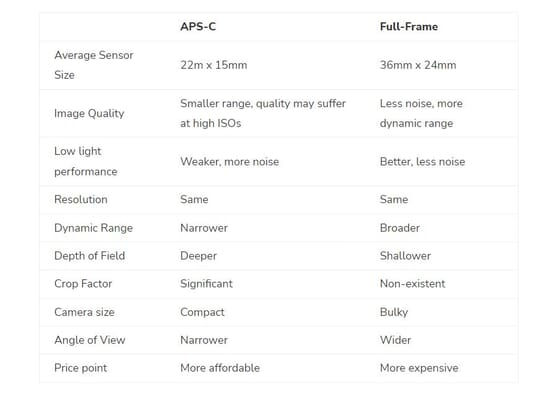
To understand the math needed to convert from full frame to APS-C, please see this YouTube video Crop Factor Truth: Do You Need Full Frame?
As a professional photographer, you’ll need to buy APS-C lenses that enable you to achieve the same type of results as full frame. But some camera companies allow you to use a full frame lens on their APS-C DSLRs. Using a full frame lens on an APS-C sensor creates a telephoto image of the subject in the center of the frame. In regard to this, understanding the following 3 crop conversion math will help you to make the right choices.
a. Lens Focal Length Crop Factor Conversion
Focal length is one of the main values of a lens. Manufacturers give this value in millimeters (mm). Focal length specifies the distance between the camera sensor and the rear principal point (please see the image below). In simple terms, it’s the space starting from the lens center to the point at which light rays converge in the focal point (resulting in a sharp picture on a digital sensor surface, or 35mm film).
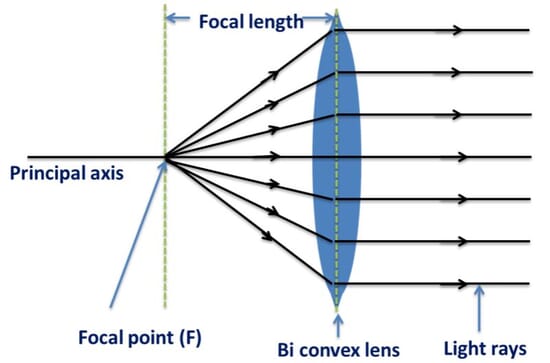
If you multiply the focal length of a lens by the crop factor of a camera, you get the Effective Focal Length (also known as Equivalent Focal Length). This value is the focal length you’ll need to produce the same angle of view as on a 35mm camera. This is the reason crop factor is often referred to as the focal length multiplier (FLM).
It’s possible to calculate the precise focal length you’ll need to purchase by using the crop factor of your camera. The table below shows the effective focal lengths of standard focal lengths when used with popular camera brands with common crop factors.
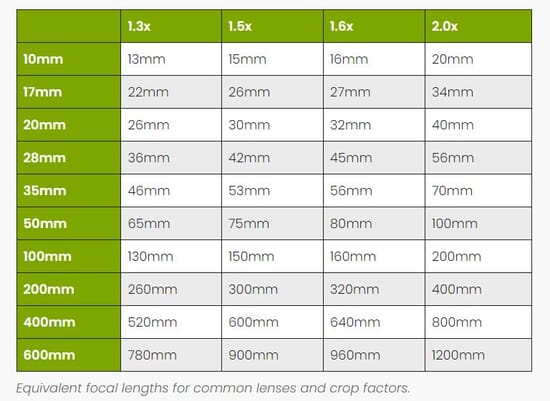
When you look at the table above, the first question that comes to your mind is, “What is the equivalent APS-C size lens that I need to buy to get the same angle of view as what I would get on a full frame system?” All you need to do is divide the full-frame size lens by the crop factor to get the lens size for APS-C.
The Focal Length conversion formula from Full Frame to Crop Sensor is:
Full Frame focal length / crop factor = Cropped focal length
For example, let’s assume you are currently a Canon full-frame shooter and you are interested in moving to the Fuji X Tran APS-C system. For the Canon system, you currently own 3 primes, a 35 mm, a 50 mm, and an 85 mm, and you’re are planning to sell those lenses and purchase 3 new Fuji APS-C lenses for your Fuji XT 4 camera that give you the same angle of view on the APS-C camera sensor. The size of Fuji lenses you would need are as follows:
- 35 / 1.5 = 23.3. Fuji makes a 23mm prime lens which would provide a comparable angle of view as the Canon 35.
- 50 / 1.5 = 33.33. Fuji makes a 35mm lens which provides almost the same angle of view as the 50mm Canon lens.
- 85 / 1.5 = 56.67. Fuji makes a 56mm lens which would give the same look as your Canon 85mm lens.
b. Full Frame Aperture Crop Factor Conversion
Aperture in photography refers to the opening of a camera lens’s diaphragm. Light passes through this opening. Aperture is calibrated in f/stops and is usually written as the following numbers: 1.4, 2, 2.8, 4, 5.6, 8, 11, and 16.
Larger apertures are represented by lower f/stops, as they give more exposure. Likewise, smaller apertures are represented by higher f/stops, as they give less exposure. I agree this seems a little contradictory. But as you take photographs at varying f/stops, this point will become clearer.
Check your camera first, and familiarize yourself with how to set Aperture Priority. Then try experimenting. Get comfortable with different aperture settings and recognizing the effect that each setting has on the end-result image.
The rule of the thumb is with equal framing at equal aperture and equal focal length, the depth of field is reduced as sensor size is increased. So, if all the other variables remain constant, the depth of field (DOF) is inversely proportional to sensor size.
Equivalent aperture describes the DOF difference between APS-C vs full frame cameras. So, a 50mm f/2.8 on a Full Frame camera is roughly equivalent to a 35mm f/1.8 on APS-C. However, you could shoot with the same lens and from the same distance at the same aperture and still get the same DOF regardless of sensor size. The only thing is you would have a totally different framing from each sensor. Let me explain it in simpler terms.
The full frame photograph might be a full-body portrait. With an APS-C sensor, you’ll get a three-quarters portrait. You’ll get a headshot with a 1” sensor. And with a 1/2.5” point-and-shoot sensor, you’ll get a close-up of an eye.
The Aperture conversion formula from Full Frame to crop sensor is: Full frame aperture / crop factor = Cropped aperture
c. Full Frame ISO Crop Factor Conversion
(For a detailed explanation on ISO, please scroll down to Tip #4 on our Clothing Photography blog post.)
When the aperture values in an APS-C camera are reduced to match the corresponding value in a full frame camera, more light is allowed in. This action affects the overall exposure of the photograph. You can compensate for that by decreasing the ISO value.
For example, consider an ISO value of 400 on a full frame camera. The equivalent ISO value on an APS-C camera with 1.6 crop factor would be approximately 160.
The amount of noise created by an APS-C at ISO 160 will be equal to or less than the noise of a full frame at ISO 400. With today’s full frame and APS-C sensors, the noise will be imperceptible at either 160 or even 400. Therefore, this isn’t much of an issue to worry about.
The conversion formula is:
Full Frame ISO / (crop factor)2 = Cropped sensor ISO
4. Depth of Field
Depth of field (DOF), also known as photography DOF, is the distance between the nearest element and the farthest element that appears sharp and is in focus in your photographs. In simple terms, DOF is the quantum of the image that’s acceptably sharp. The image below will help you understand DOF better.
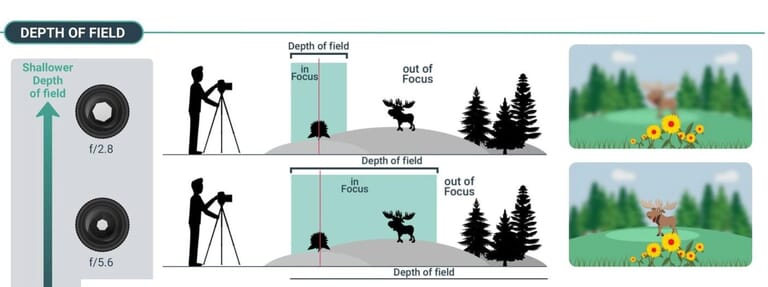
Shallow Depth of Field vs. Deep Depth of Field
It’s possible to increase or decrease the DOF by adjusting the aperture. When you open up the aperture, the field becomes smaller. When you close down the aperture, the field becomes wider. For example, an aperture of f/2 will result in a blurry background. This is a shallow depth of field. But an aperture of f/22 will display everything in focus. This is a deep depth of field.
As you move through the different aperture settings, you’ll see varying degrees of blurriness/sharpness. This feature enables you to control the way the image looks. Look at the images below.
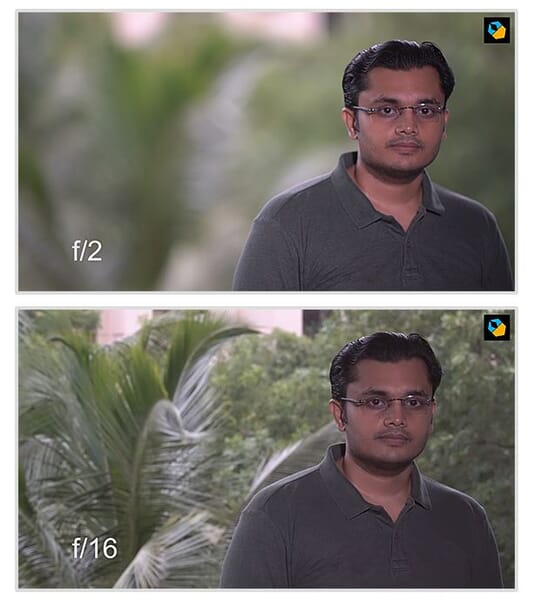
In the first image, the aperture is f/2. This image has a shallow depth of field with a blurry background. In the second image, the aperture is f/16. This image has a deep depth of field with everything in the background clearly visible.
Historically, photographers have favored full frame sensors because it’s easier to achieve a more shallow depth of field, and this is a common need with portrait photography. But the choice of lenses designed specifically for APS-C systems has grown substantially, and it is now possible to buy a lighter, smaller, and less expensive lens for APS-C that gives almost the same bokeh (shallow depth of field) as a full frame system.
For example, the Fuji X system (APS-C sensor with a 1.5 crop factor) offers the 56 1.2 lens. This portrait lens is comparable to the 85mm 1.8 lenses offered by Canon and Nikon for their full frame systems. After applying the conversion formulas, we know that a 56 designed for APS-C is almost the same focal length as an 85 designed for full frame (56 times 1.5 = 84). And the apertures are also comparable because if we multiply 1.5 to Fuji’s 1.2, we get 1.8 for full frame.
5. Low Light and Noise
Of course, it’s true that a full frame camera provides noise-free (cleaner) images in low light when shooting at the same ISO on both the APS-C and full frame cameras. If the pixel count is constant, a full frame camera typically has larger pixels (photoreceptors), and these gather more light. This will result in a stronger image signal that needs less gain. Therefore, with a full frame camera, you can increase the ISO settings confidently.
However, by using the APS-C system, we get the benefit of shooting at a lower ISO. And if you are using full frame in a low light situation, you may be required to shoot at the widest aperture (assuming you don’t want to increase ISO), which means you might run the risk of getting images that are not entirely in focus.
Let’s assume we are doing an outdoor portrait session with no artificial lights with low available light. Our goal is to achieve a nice shallow depth of field. Using the Fuji APS-C system with the 56 1.2, we would set our aperture at about 1.2 to get a similar depth of field that the full frame lens produces at 1.8. Assuming the exposure setting is 1/125, 1.2, and ISO 200 to achieve the desired bokeh and correct exposure on APS-C, we’d need to be at 1/125 shutter speed, 1.8 aperture, and ISO 320 to achieve a comparable exposure setting on the full frame. The ISO needs to be set at a higher level on the full frame (200 times 1.5 = 300, so the closest ISO is 320). So even though the APS-C is a smaller sensor, we get the benefit of shooting at lower ISO than when we’d be shooting on the full frame.
In short, the larger sensor will produce less noise when shooting at the same ISO as on APS-C, but you might get by with a lower ISO on APS-C, thereby reducing your noise. Unless you are shooting astrological images, you might not really need the noise free benefits of a full frame sensor. For most photography use cases, you’ll achieve noise free images with either format.
As far as resolution is concerned, APS-C vs full frame cameras is almost identical thanks to the latest technological advancements. But the sensor is what truly sets the full frame apart. A full frame camera is equipped with a sensor that’s more than 2.5 times the surface area of a normal APS-C sensor. This attribute gives it the capability of having larger pixels.
Larger pixels and more pixels translate to the sensor’s ability to take in more light. Hence, the sensor can read the scene more accurately, reducing the chances of digital noise. If the amount of light reaching the sensor isn’t sufficient, digital noise can occur, and the ability to reproduce an image is weak.
But if you are using a full frame camera with a maximum aperture on your lens of only 4.0, and shooting in low light conditions without an artificial light source, then you are going to be forced to crank up your ISO. Unfortunately, going to a higher ISO setting will increase noise.
Fast lenses for APS-C (apertures of 1.2 – 2.8) are less expensive than the equivalent speed lenses for full frame. Shooting with a faster lens means you don’t have to crank up the ISO, and you won’t get noise on APS-C. So, to some extent, this dispels the need to to use full frame sensors to achieve less noisy image

Photography Coaching Via Zoom
Have the right tools but don’t know how to properly position your apparel? Get access to the basics, tips, and secrets to taking picture-perfect apparel shots with Picsera’s Photography Zoom Coaching. Contact Us to find out more.
6. Camera and Lens Sizes
One of the main benefits of APS-C cameras is they are generally smaller and lighter than full frame cameras. While many lenses are also smaller on APS-C systems, some lenses designed for APS-C can actually be pretty large and heavy. Generally, APS-C systems are easier to carry for long periods, which is great for wedding and sports photographers.
The main disadvantage of smaller cameras is they are not as easy as bigger cameras to grip. That’s the reason some photographers prefer a full frame camera for how it feels in their hands.
Full frame lenses made by Canon and Nikon can work on APS-C cameras from Canon and Nikon, as well. But lenses created specifically for APS-C cameras do not work on full frame cameras.
7. APS-C Cameras Are Less Expensive
If we compare APS-C vs Full frame, APS-C camera bodies are usually less expensive compared to full frame camera bodies. And APS-C lenses are cheaper to manufacture than full frame lenses.
An APS-C camera has a smaller sensor than the sensor used in a full frame camera. This is an important point for two reasons. Firstly, the larger the sensor size, the more expensive it’s to manufacture. APS-C sensors are small and, therefore, less expensive to manufacture.
Secondly, the APS-C camera body is small because it doesn’t have to accommodate a large sensor. Again, the manufacturing cost is low because there are fewer materials needed to manufacture APS-C camera bodies.
Another important factor driving down the cost of APS-C cameras is that lenses of comparable speed and quality are less expensive in the APS-C category. So you can get an entry-level APS-C camera at a competitive price.
8. APS-C Camera Sensors Deliver Amazing Prints
It’s true that full frame sensors are unbeatable when you want larger prints. Full frame images have more pixels (higher resolution), and therefore, they are a better choice when you need to print very large images, greater than 20 x 30. This is the reason they are an excellent choice for landscape photographers.
But for most types of professional photography applications, the resolution available in APS-C is beyond what is needed for amazing prints.
9. When Is It Right to Use Full Frame Over Crop Sensor?
a. High Dynamic Range – Outdoor Photography
Dynamic range (DR) is the variation between the lightest and darkest tones in a photo, ranging from pure white to pure black. The sensor of a camera records image data in tones or gray shades. All sensors are not the same. Some sensors can only record information from light gray to dark gray tones. But they cannot quite record information from pure white and pure black.
In simple terms, the dynamic range of a camera refers to the number of increments that the sensor can detect between pure white and pure black, as well as the tones in between. DR was more relevant a few years ago. But with technological improvements, the latitude (DR) of a crop sensor is almost as good as full frame.
b. Landscape Photography
Landscape photography is the art of taking photographs of nature and the outdoors in such a captivating way that you bring the viewer into the scene. Taking this point into consideration, a camera that has the ability to record more information on a wider sensor with a full frame wide angle lens would be ideal for landscape photography.
The traditional professional sensor size of choice has always been full frame. Even now, despite the availability of modern APS-C cameras, some landscape photographers opt for medium format, especially with the recent resurgence of the format. When the sensor is bigger, the camera will be bigger too. And the lenses will be heavier, and the kit will also be expensive.
But do you really need a full frame camera for landscape photography?
Henry Turner, a renowned landscape photographer, points out that when all other things are equal, a full frame sensor can deliver better image quality. He says that for a landscape photographer, all the extra features that come with pricey cameras are like creature comforts. You can look at Henry Turner’s breathtaking prints and portfolio.
Henry Turner considers it an absolute privilege to own a Nikon Z7. He says this camera’s stunning image quality, loads of useful features, and fabulous range of lenses make it his perfect camera. In this video, Henry Turner speaks about his experience of APS-C vs full frame.
When you consider the extraordinary advances in sensor technology, it’s no wonder that even cameras with APS-C sensors can deliver extremely high-quality files. In fact, a lot of the best landscape photography experts produce great work with APS-C cameras. Elia Locardi is a notable example. He has used Fuji’s X Series cameras for capturing exceptional images.
An APS-C camera also means an affordable price and lighter weight. The second feature can be a great benefit when you are hiking long distances with your photography gear.
c. Architecture Photography
Architectural photographers might be better off with full frame or even medium format.
The largest factor that favors the use of full frame for architecture is the availability of the choice of lenses. While it’s true that tonal range and better low light capturing abilities exist with full frame, the reality is that the differences are pretty negligible. If you need to print billboard size prints, then as with any type of photography, a full frame system will present you with more freedom to print really large.
The most relevant point for architecture photographers to consider is the lens choices available in full frame cameras. Full frame offers more specialized tilt-shift lenses than crop sensor systems. When photographing buildings, architecture photographers typically use tilt-shift lenses to remove perspective distortions. It’s often necessary to tilt the camera upward toward the sky when photographing a building. This creates a skew, and the building lines don’t appear completely vertical.
The reason for this skew is because the camera’s sensor plane is tilted in relation to the building. Ideally, the sensor should be perpendicular to the ground and pointing straight ahead / centered. With a tilt-shift lens, you don’t need to angle your camera upward. Instead, you shift the lens. As a result, the building will be straight. That’s because only the lens shifts physically, but the camera will stay put. This technique is especially useful when you shoot interiors with high ceilings.
The choice of lenses in general for a full frame system is much greater, and this is even more so in the case of tilt-shift lenses.
10. When Could You Use APS-C vs Full Frame Camera Sensors?
a. Product Photography
You don’t need full frame for product photography. As already mentioned, a smaller sensor will give more depth of field, keeping aperture and lens field of view constant. This is actually a benefit when shooting products, as your goal is typically to capture a deep depth of field to show all the details of a product.
Olympus is the market leader for producing macro photography cameras. Olympus cameras use a micro 4/3 sensor, which is even smaller than a crop sensor. One of the reasons they use a smaller sensor is to capture more depth of field.
b. Sports Photography
Many sports photographers use crop sensors coupled with a lens from a full frame camera (Nikon or Canon shooters). This enables them to create images that zoom in tight on their subjects and get most of the sensor covered with their subjects.
You can use a 200mm full frame lens on a crop sensor and get the same zoom as you would by using a 300mm full frame lens. The 200mm lens is much lighter and much less expensive. This means a semi-pro sports photographer can use a 70-200 f/2.8 lens for a Canon 90D and get the same reach as they would with a 112-300 f/2.8 (if that lens existed) on a Canon 5D full frame camera. To get a sense of the difference in price, consider this: The msrp of a 200mm f/2.8 prime in Canon’s L line is $819 vs. the msrp of a 300mm f/2.8 prime, which is $4879.
c. Wedding and Events
Which camera sensor is best aps-c vs full frame camera sensor? Wedding and event photographers are on their feet for many hours, and the weight benefits of using a smaller camera outweigh the marginal benefits of using full frame cameras. Since most wedding images never get printed larger than a 16×20, there is no real argument for using a full frame. Achieving a shallow depth of field or bokeh (lens blur) is possible with APS-C lenses from Fuji (56 1.2).
But more often than not, event photographers are actually trying to get more of the scene in focus. Using APS-C enables them to shoot at f 2.8 and lower ISO such as 800 without the risk of blurring out the background as would happen at 2.8 on a full frame camera. If they were on full frame, they’d be shooting at 4.0 to get the same depth of field, which means they need to go to ISO 1600, which is possibly noisier than 800 on APS-C.
Check out this video (https://youtu.be/fUKhbjM7qhE) by Booray Perry in Tampa, FL, who switched to a Fuji XT-4 from a Canon full frame, and one of the reasons he did was to be able to shoot wider in low light conditions.
d. Portraits Photography Sessions
The only real argument for sticking to full frame for portrait photography is it’s easier to separate the background from the subject (bokeh effect). But when you are shooting environmental portraits or group shots, there is no real benefit to using full frame. Andrew Van Beek is a studio portrait photographer who explains why APS-C has made a huge change to his portrait photography practice in this article (fuji-x-lenses-and-full-frame).
Andrew says:
“From a purely aesthetic point of view, I would have no problem only using the Fuji X-E2 in the studio either with natural or studio lights. The results are virtually indistinguishable from a full frame camera, and 16Mp is plenty for 95% of all real-world applications. The digital files have similar latitude for processing, and once processed, they look equally great. The differences in look will only decrease as the Fuji 56mm F1.2 and Panasonic F42.5mm F1.2 are available.”
11. Links to Good Choices for APS-C vs Full Frame Crop Sensor Cameras
Visit this page
a. Fuji XT-4 (Price: $1,699.00)
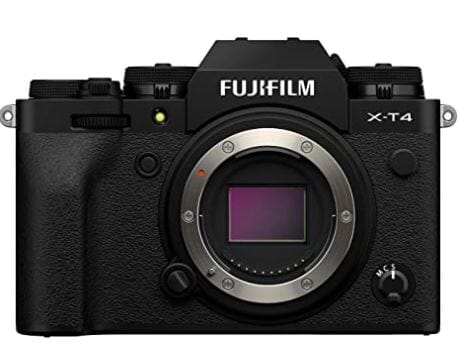
b. Very Affordable Nikons and Canons That Work with Many Canon and Nikon Lenses
1. Nikon D3100 Digital SLR Camera Body (Kit Box) No Lens Included (Price: $199.99)
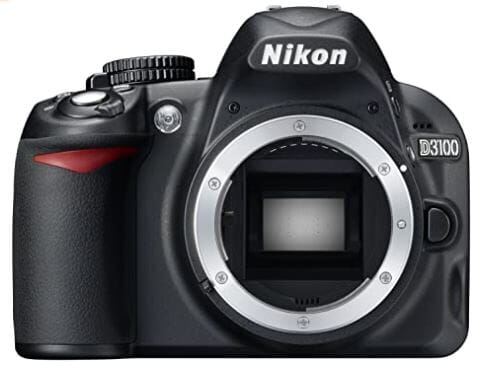
2. Nikon D7000 DSLR (Body Only) (Price $699.95)
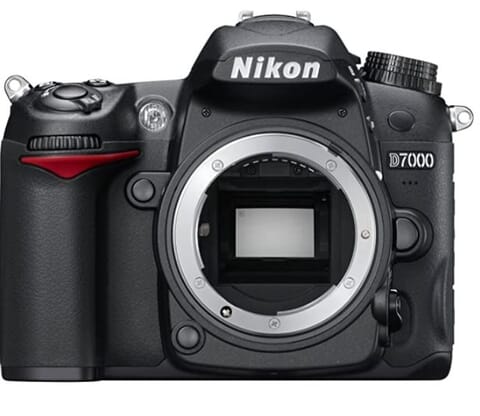
3. Nikon D50 DSLR Camera (Body Only) (Price: $79.00)
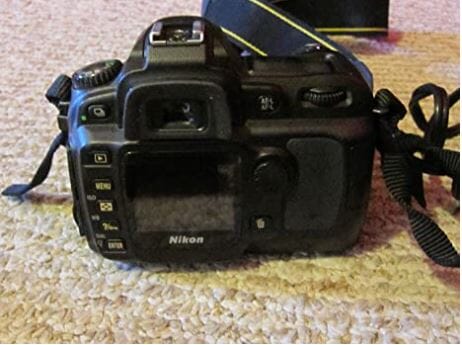
4. Canon EOS Rebel T7 DSLR Camera (Price: $479.99)
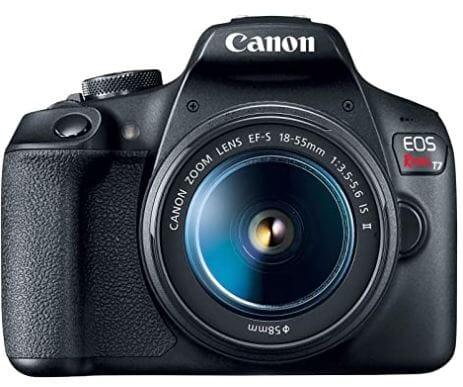
5. Canon EOS Rebel SL3 EF-S 18-55mm F/4-5.6 (Price: $749.99)
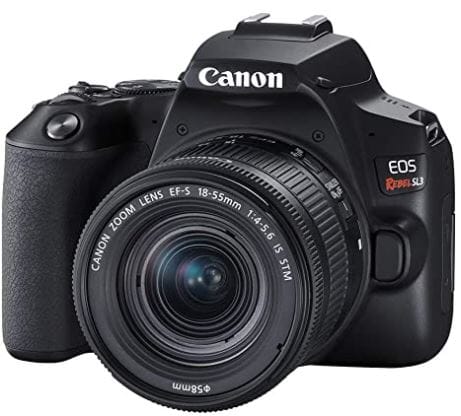
6. Canon EOS Rebel SL3 Body DSLR Camera (Price: $649.99)
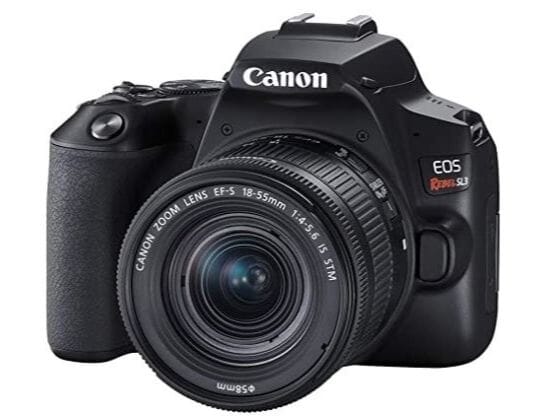
12. Good Choices for Full Frame Cameras
1. Nikon D750 DSLR Camera (Body) (Price: $939.99)
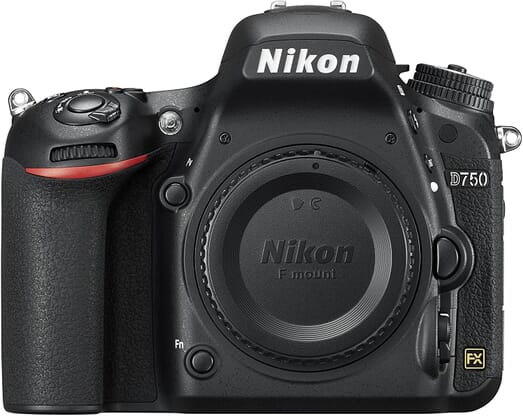
2. Nikon D850 Digital SLR Camera (Body) (Price: $2,429.00)
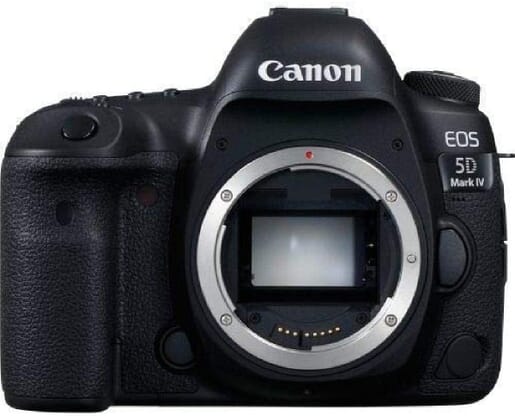
3. Canon EOS 5D Mark IV DSLR Camera (Body) (Price: $ 2,699.00)
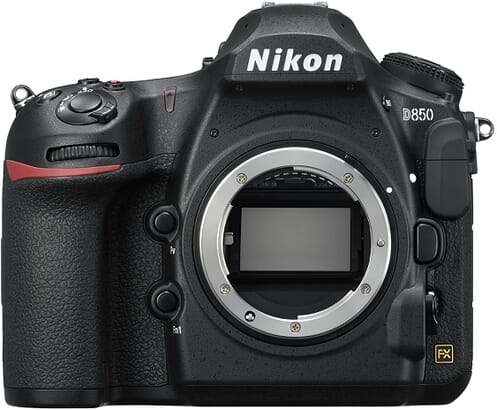
Conclusion
APS-C vs Full Frame Camera Sensor. What’s best?
Full frame is typically considered better. But many experts now argue that you can get comparable quality on an APS-C camera sensor. However, you need to think about your personal needs. Are you looking for a certain type of bokeh (lens blur) that is only available on a full frame lens? Well, then maybe you need to buy a full frame camera.
APS-C camera systems are typically smaller and lighter. You need to think about how you feel when shooting one system versus the other. If the camera is too heavy, it could affect your mood and your desire to take pictures.
The best camera for you is the one that you have with you when you need to use it. If a smaller system motivates you to take the camera with you, then that’s a better choice over all other factors. If you are a portrait photographer and wedding photographer, part of your job is to be an entertainer and give people a great experience. If the larger system is weighing you down and making you tired, it could affect the quality of your work.
But if you are a commercial photographer who needs to create imagery for billboards, then clearly, a full frame system is the right choice. At the end of the day, it just comes down to what works best for each of your shooting circumstances. But there is one thing I can say with confidence, it is: Image quality is rarely an argument in favor of full frame in the APS-C vs Full frame camera sensors debate.
Need help with editing photos? Let us do the work for you. Start your FREE trial today!

Picsera was founded in 2014 by David Sinai, a serious ameteur photographer who spent the first 20 years of his career working in the financial technology space. With a track record of building innovative solutions and working with offshore partners, David started Picsera to help photographers work more efficiently by enabling them to outsource their image editing. With very affordable rates and incredibly fast turnaround times, photographers from a variety of industries (eCommerce, real estate, weddings and portrait studios) enjoy larger, more successful businesses while still maintaining more time for their families, friends, and hobbies. Today, David and his team at Picsera assist all kinds of content creators with 3D modeling and rendering and video editing. When David is not working you’ll find him spending time with his family, mountain biking, or capturing landscapes throughout South Florida with either his pro cameras or drone.


